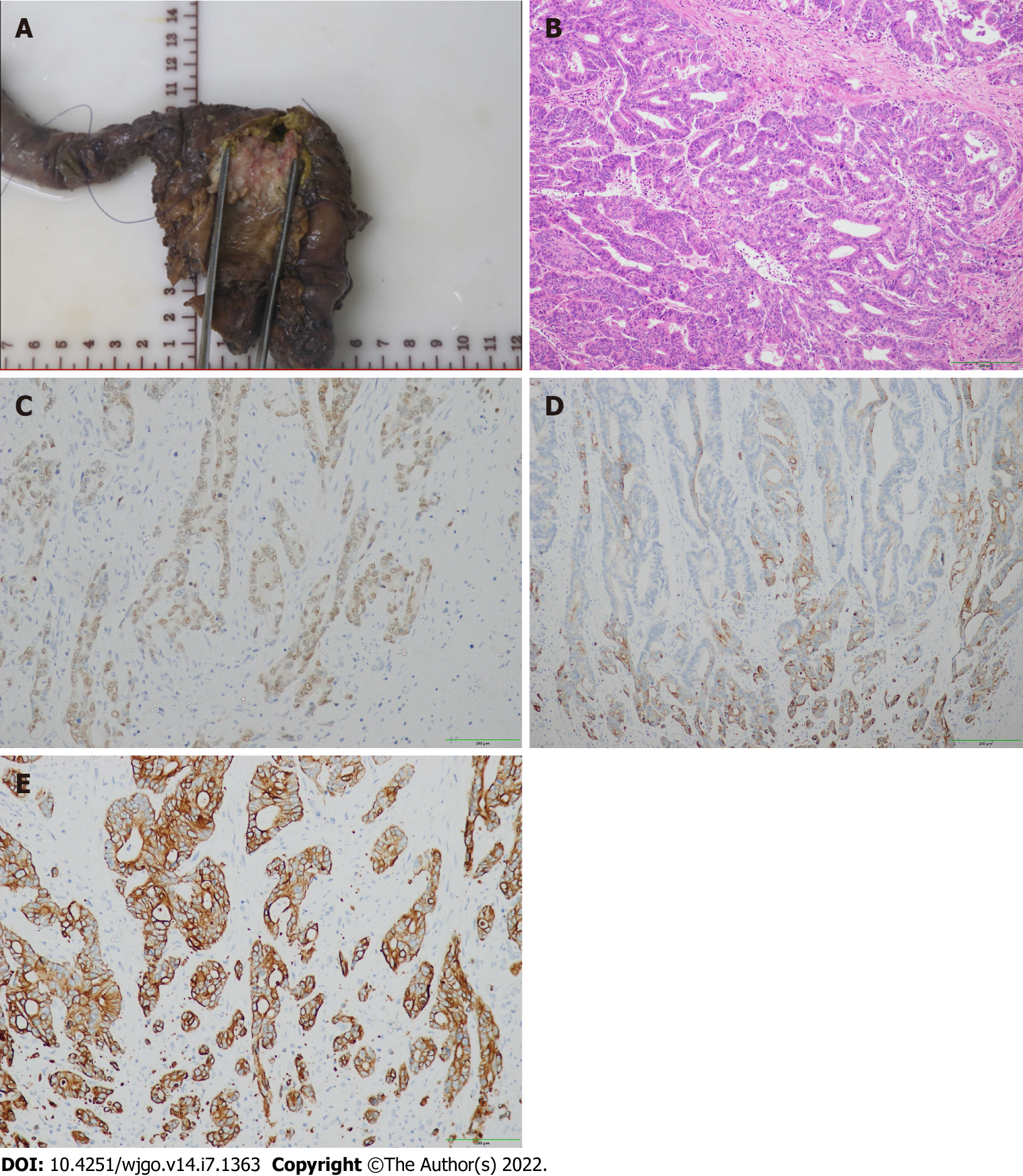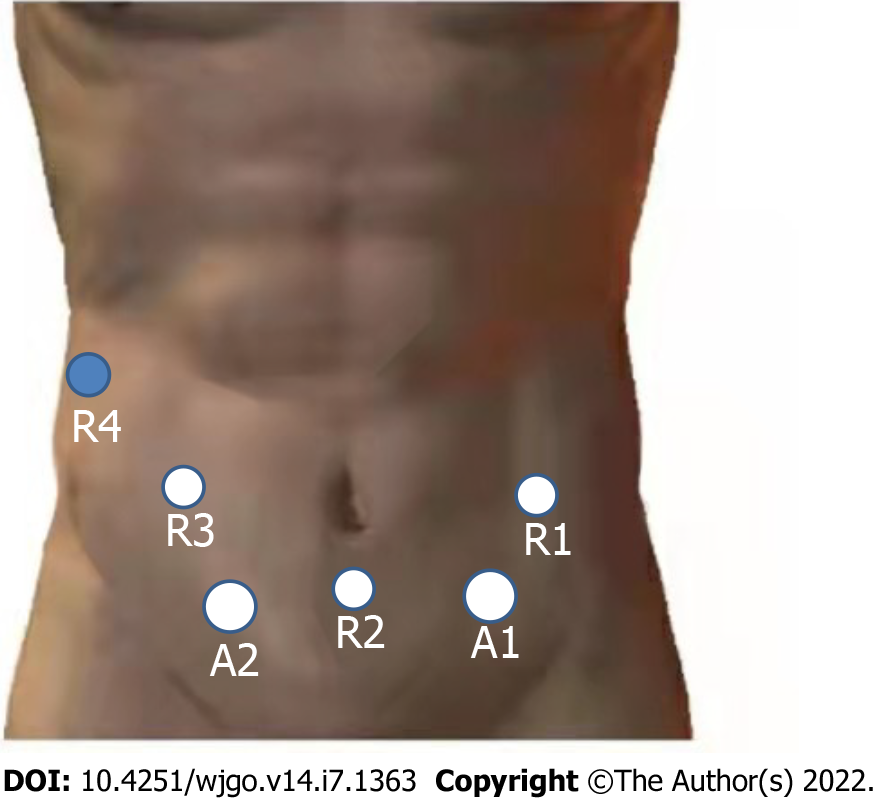Copyright
©The Author(s) 2022.
World J Gastrointest Oncol. Jul 15, 2022; 14(7): 1363-1371
Published online Jul 15, 2022. doi: 10.4251/wjgo.v14.i7.1363
Published online Jul 15, 2022. doi: 10.4251/wjgo.v14.i7.1363
Figure 1 Preoperative imaging of the patient.
A: Chest X-ray illustrated that the right heart was mirrored; B and C: Multi-slice spiral computed tomography displayed complete transposition of thoracic and abdominal organs and a mass in the lower common bile duct. CBD: Common bile duct; GB: Gallbladder.
Figure 2 Postoperative pathological picture.
A: The mass in the distal common bile duct infiltrated the duodenal wall; B: Well-differentiated adenocarcinoma; C: Immunohistochemical CDX-2 positive; D: Immunohistochemical cytokeratin (CK)7 positive; E: Immunohistochemical CK19 positive.
Figure 3 Operation hole layout and device arm placement.
A1 and A2: Assistant; R1, R3, and R4: Robotic arms; R2: Camera.
Figure 4 Detailed surgical procedure.
A: Abdominal examination revealed that the abdominal organs were in reverse positions; B: The common hepatic artery was exposed; C: Separation revealed the right gastric artery; D: A Kocher incision was made to expose the inferior vena cava; E: The head of the pancreas covered the descending and horizontal parts of the duodenum; F: Exposing the superior mesenteric vein; G: The uncinate process of the pancreas was amputated along the right side of the superior mesenteric vein. CHA: Common hepatic artery; GB: Gallbladder; IVC: Inferior vena cava; RGA: Right gastric artery; SMA: Superior mesenteric artery; SMV: Superior mesenteric vein.
- Citation: Li BB, Lu SL, He X, Lei B, Yao JN, Feng SC, Yu SP. Da Vinci robot-assisted pancreato-duodenectomy in a patient with situs inversus totalis: A case report and review of literature. World J Gastrointest Oncol 2022; 14(7): 1363-1371
- URL: https://www.wjgnet.com/1948-5204/full/v14/i7/1363.htm
- DOI: https://dx.doi.org/10.4251/wjgo.v14.i7.1363












